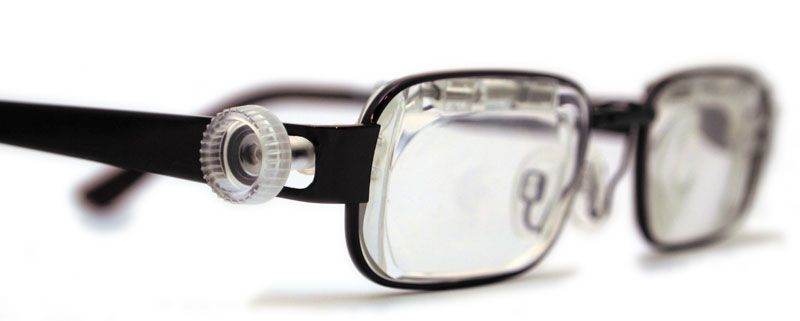New Glasses Let Wearers Adjust Their Own Specs

Glasses-wearers know the feeling of sitting in the optometrist's chair every year, looking through a mask as the doctor flips through different prescriptions of lenses. "Which is better? A? Or B?" the optometrist will ask, as the lenses slide in place. Now, however, a company is preparing to make eyeglasses for which patients do their own flipping and prescribing. Wearers simply adjust their lenses with a dial until they can see clearly.
The glasses, called Eyejusters, are made for people who need different prescriptions for different tasks, such as reading and watching TV. They're also for people in developing countries who don't have access to optometrists. Adjustable glasses such as Eyejusters let minimally trained volunteers give out glasses that users tweak to their own prescription. Though wearing incorrect prescriptions can worsen eyesight, University of Oxford studies have shown that people over the age of 12 can safely use adjustable lenses.
Each Eyejusters lens is actually made of two plastic lenses stacked in front of one another. The adjusting dial slides one of the lenses side to side. As one lens slides, the two lenses combine create different shapes that correspond to a range of prescriptions.
There's a great need for glasses like Eyejusters. About 153 million people in the world live with visual impairment that is able to be corrected with glasses, according to a 2009 World Health Organization article. But there aren't enough trained professionals to prescribe glasses for everyone. In Ghana, for example, there is one optometrist per 1 million people, according to the University of Oxford's Center for Vision in the Developing World. To compare, the U.K. has one optometrist for every 8,000 people.
Currently, the Center for Vision in the Developing World distributes adjustable glasses filled with oil. A system of syringes pumps oil in or out of the lenses to create convex or concave surfaces. Eyejusters are more durable and look more like normal glasses, so people will hopefully like wearing them more, according to the Eyejusters website. In a pilot project, the company has already provided 800 pairs of Eyejusters to those living in rural Morocco.
The company hasn't started mass production yet, however. The website asks potential customers to sign up for updates. The site doesn't say how much the glasses would cost, either for individual customers in developed nations or for organizations looking to give out glasses in developing countries.
This story was provided by InnovationNewsDaily, a sister site to LiveScience. Follow InnovationNewsDaily on Twitter @News_Innovation, or on Facebook.
Sign up for the Live Science daily newsletter now
Get the world’s most fascinating discoveries delivered straight to your inbox.












